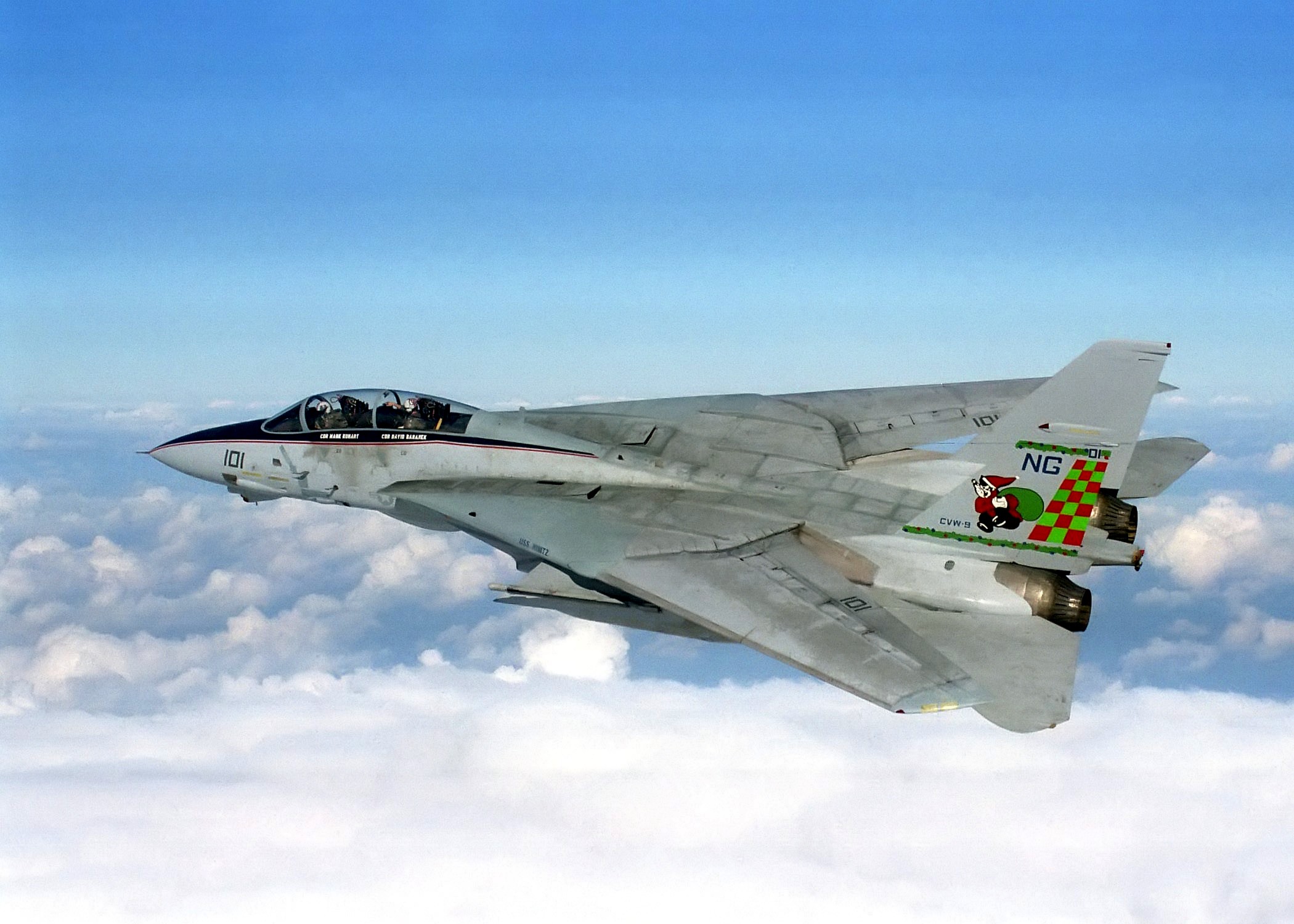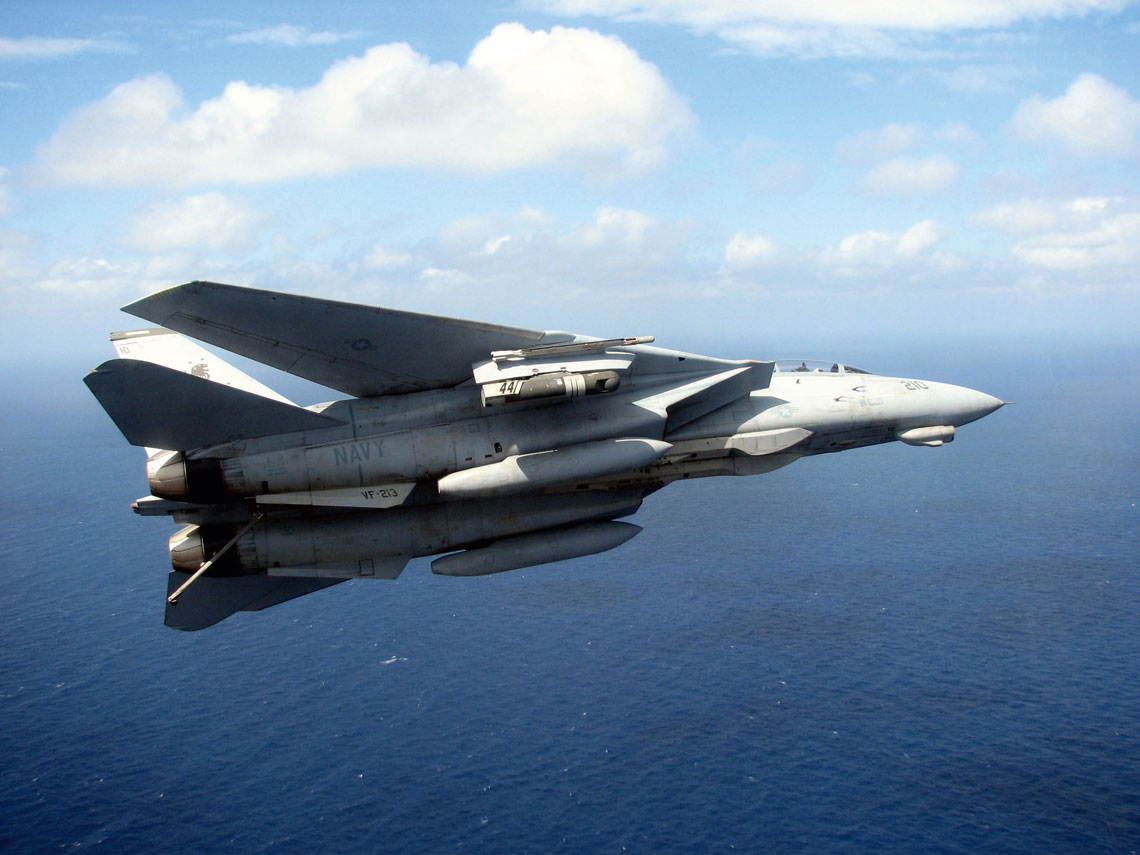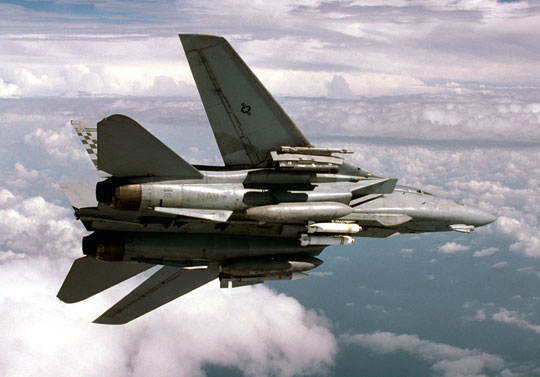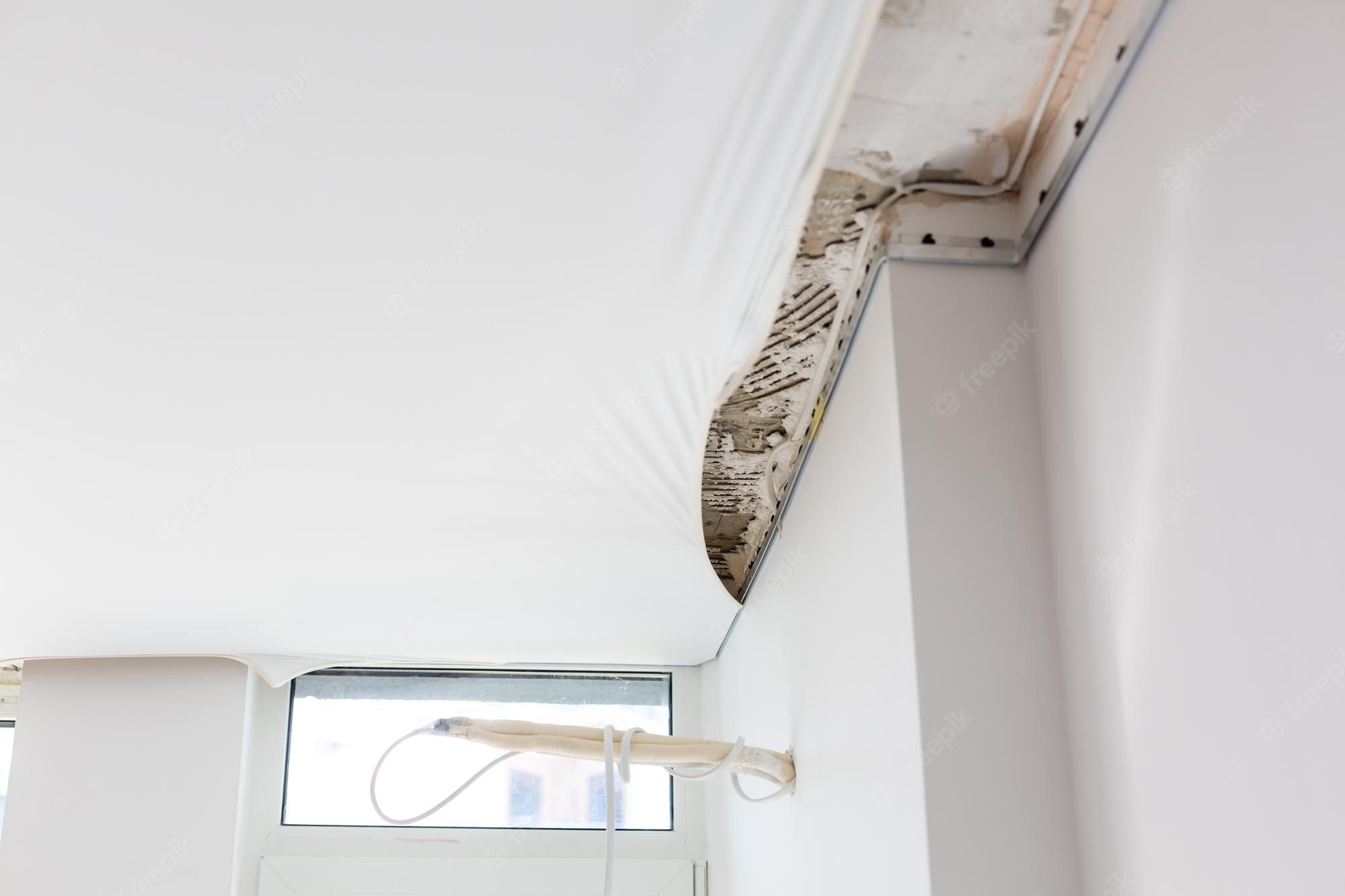
Grumman F-14 Bombcat Part 2

In November 1994, Vice Admiral Richard Allen, Commander of the Atlantic Fleet Air Force, gave permission to continue experimenting with the LANTIRN navigation and guidance system for the F-14 Tomcat.
In the early 90s, Grumman tried to convince the US Navy to adapt the F-14D to carry precision weapons. The modernization of Block 1 Strike involved, in particular, the installation of new on-board computers and software. The cost of the program was estimated at $1,6 billion, which was unacceptable to the Navy. The US Navy was willing to allocate only about $300 million to integrate GPS-guided JDAM bombs. However, this program was still in its infancy.
In early 1994, Martin Marietta began research into the possibility of equipping F-14 fighters with its LANTIRN (Low Altitude Navigation and Targeting Infra-Red for Night) navigation and guidance system. The system consisted of two blocks: navigation AN / AAQ-13 and guidance AN / AAQ-14. The aiming cartridge had the function of illuminating the target with a laser beam. It was designed for F-15E Strike Eagle fighter-bombers and F-16 fighters. LANTIRN had a baptism of fire during Operation Desert Storm, where he received excellent marks. Because of the price, only the AN/AAQ-14 sighting cartridge was offered for the F-14. An unofficial program was launched that, thanks to the ingenuity of Martin Marietta's engineers and the involvement of naval officers, turned the Tomcat into a self-sufficient strike platform.
In November 1994, the Commander of the Atlantic Fleet Air Force, Vice Admiral Richard Allen, gave permission to continue the experiment with the LANTIRN system. His support for the project was crucial. However, the biggest problem was the integration of the container with the fighter. This had to be done in such a way that costly modifications to the avionics and airborne radar were not required. Larger modifications would have been associated with greater costs, which the Navy would definitely not agree to. The LANTIRN soccer ball was only connected to the fighter's onboard systems via the MIL-STD-1553 digital data bus. Such rails were used on the F-14D, but not on the F-14A and F-14B. So the AN / AWG-9 analog radar and the AN / AWG-15 fire control system failed to "see" the LANTIRN container. Fortunately, Firchild at the time offered a special adapter that allowed digital and analog systems to be connected without the need for a digital data bus.
Martin Marietta developed a design at its own expense, which was demonstrated to the US Navy in early 1995. The result of the demonstration was so convincing that in the fall of 1995 the Navy decided to start a limited proof-of-concept program. The program had many opponents in the naval command, who argued that it was better to invest in a fleet of Hornets than in F-14s, which would soon be withdrawn anyway. The decisive factor was probably the fact that Martin Marietta covered a large part of the costs associated with the integration of storage tanks.

An F-14 Tomcat armed with two CBU-99 (Mk 20 Rockeye II) cluster bombs designed to counter light bomb armor.
The work was carried out in two directions and included the refinement of both the container itself and the fighter. The standard container AN/AAQ-14 is equipped with its own GPS system and the so-called. The Litton inertial measurement unit (IMU) derived from the AIM-120 AMRAAM and AIM-9X air-to-air missiles under development. Both systems could connect to the F-14 inertial navigation system. This allowed precise targeting with a module that fed all the ballistic data to the fighter. Moreover, the connection of the tray with the aircraft's fire control system could be carried out without using the onboard radar. "Bypassing" the radar greatly simplified the integration process, while remaining an effective and cheap solution. The container was able to make all the necessary calculations for the release of weapons, which he transferred to the F-14 fire control system. In turn, he himself unloaded all the data from the fighter’s weapons, which he copied into his internal database. The modified guidance unit was designated AN / AAQ-25 LTS (LANTIRN Targeting System).
The modification of the fighter included, among other things, the installation of a bunker control panel equipped with a small control knob (joystick). The bunker panel was mounted on the left panel in place of the TARPS reconnaissance bunker panel, and was virtually the only space available in the rear cockpit. For this reason, the F-14 could not simultaneously carry LANTIRN and TARPS. The joystick for controlling the optoelectronic head and handling the container came from a pool of components left over from the A-12 Avenger II attack aircraft construction program. The image from the body of water could be displayed at the RIO stand on a round TID tactical data display known as the "spherical aquarium". However, the F-14 eventually received a new so-called Programmable Target Information Display (PTID) with a screen size of 203 x 203 mm. The PTID was installed in place of the round TID display. The data normally transmitted to the TID by airborne radar can be "projected" onto the image displayed by the LANTIRN. Thus, PTID simultaneously displayed data from both the onboard radar and the sighting station, while the two systems were not connected to each other in any way. As in the early 90s, the 203 x 202 mm display was unique.
Its resolution provided a much better image and usability than the displays found in the F-15E Strike Eagle fighter-bombers. The LANTIRN image could also be projected onto the remote control's vertical VDI indicator (in the case of the F-14A) or one of the two MFDs (in the case of the F-14B and D). RIO was responsible for all the work of the container, but the bomb was dropped "traditionally" by the pilot by pressing a button on the joystick. For suspension of the LANTIRN container, there is only one attachment point - No. 8b - on the right multifunctional pylon. The container was installed using an adapter, which was originally intended for the suspension of AGM-88 HARM anti-radar missiles.
In early 1995, an air tank test program began. This was officially called a "demonstration of capability" so as not to run the actual procedure of the test program, which would have been too costly. For testing, a single-seat F-103B (BuNo 14) with an experienced crew was “borrowed” from the VF-161608 squadron. A suitably modified Tomcat (named FLIR CAT) made its first flight with LANTIRN on March 21, 1995. Then the bomb tests began. On April 3, 1995, at the Dare County training ground in North Carolina, F-14Bs dropped four LGTR training bombs - simulating laser-guided bombs. Two days later, two training unarmed bombs GBU-16 (inertial) were dropped. The accuracy of the container is confirmed.
Subsequent tests, this time with a live bomb, were conducted at the Puerto Rican Vieques test site. The Tomcat was escorted by a pair of F/A-18Cs equipped with NITE Hawk units. The Hornet pilots had to use their own pods to check if the laser dot from the LANTIRN tank was indeed on target and if there was enough "light" energy from it. In addition, they had to record the tests on a video camera. On April 10, two GBU-16 inertial bombs were launched. Both hit their targets - old M48 Patton tanks. The next day, the crew dropped four GBU-16 live bombs in two shots. Three of them hit directly on the target, and the fourth fell a few meters from the target. Measurements from the NITE Hawk canisters showed that the laser dot was kept on the target at all times, so it was believed that the fourth bomb's guidance system had failed. In general, the test results were found to be more than satisfactory. After returning to the Ocean base, the test results were solemnly presented to the command. The F-14B FLIR CAT was used over the following weeks to conduct familiarization flights for all interested high-ranking command officials.
In June 1995, the Navy decided to purchase LANTIRN trays. By June 1996, Martin Marietta was to deliver six canisters and modify nine Tomcats. In 1995, Martin Marietta merged with Lockheed Corporation to form the Lockheed Martin consortium. The LANTIRN storage tank integration and testing program has been a record. The whole process, from its creation to the delivery of the first finished containers to the Navy, was carried out within 223 days. In June 1996, VF-103 Squadron became the first Tomcat unit equipped with LANTIRN containers to go on a combat flight aboard the aircraft carrier USS Enterprise. It was also the first and only time that LANTIRN-equipped Tomcats operated from the same deck alongside Grumman A-6E Intruder bombers. The following year, the A-6E was finally retired from service. The price of one cartridge was approximately 3 million dollars. In total, the US Navy purchased 75 trays. This was not a number that allowed containers to be permanently distributed to individual divisions. Each unit going on a military campaign received 6-8 containers, and the rest were used in the training process.
In the mid-90s, in connection with the decommissioning of the A-6E airborne bombers and the possibility of equipping the F-14 with LANTIRN containers, the Navy began a limited Tomcat modernization program. The F-14A and F-14B received avionics that would bring their capabilities closer to the D standard, including: MIL-STD-1553B data buses, upgraded AN / AYK-14 on-board computers, upgraded AN / AWG-fire control 15 system, a digital flight control system (DFCS) that replaced the analog system, and an AN / ALR-67 RWR radiation warning system.
Bombcat in combat
Thanks to the introduction of the LANTIRN guidance module, the F-14 fighters have become truly multi-purpose platforms capable of performing independent and accurate attacks against ground targets. The Navy took full advantage of the capabilities of the Bombcats. In 1996-2006, they took part in all combat operations in which American cabin aircraft were involved: in Operation Southern Watch in Iraq, in Operation Allied Force in Kosovo, in Operation Enduring Freedom in Afghanistan, and in Operation "Iraqi freedom" to Iraq.
Operation Southern Watch began in August 1992. Its purpose was to establish and control a no-fly zone for Iraqi aircraft. It covered the entire southern part of Iraq - south of the 32nd parallel. In September 1996, the border was moved to the 33rd parallel. For twelve years, coalition aircraft patrolled the zone, interfering with Iraqi air activity and countering air defense measures that Iraq regularly "smuggled" into the zone. In the initial period, the main task of the Tomcats was to carry out defensive hunting patrols and reconnaissance missions using TARPS containers. F-14 crews have successfully used LANTIRN containers to detect and track the movements of Iraqi anti-aircraft artillery and mobile anti-aircraft missile launchers. A typical patrol operation lasted 3-4 hours. The long range and durability of the F-14 fighters were their undoubted advantage. They could stay on patrol for typically twice as long as Hornet fighters, who either had to take on extra fuel in the air or were relieved by another shift.
In 1998, Saddam Hussein's unwillingness to cooperate with UN inspectors on access to manufacturing sites and the stockpiling of weapons of mass destruction led to a crisis. On December 16, 1998, the United States launched Operation Desert Fox, during which certain objects of strategic importance in Iraq were destroyed within four days. On the first night, the attack was carried out entirely by the US Navy, which used carrier-based aircraft and Tomahawk cruise missiles. It was attended by F-14Bs from the VF-32 squadron operating from the aircraft carrier USS Enterprise. Each of the fighters carried two GBU-16 guided bombs. For the next three nights, the squadron attacked targets in the Baghdad area. F-14Bs carried GBU-16 and GBU-10 bombs and even GBU-24 heavy armor-piercing explosive bombs. They were used against the bases and objects of the Iraqi Republican Guard.
